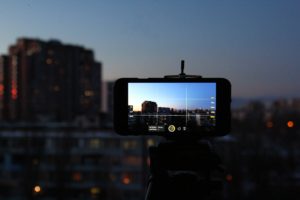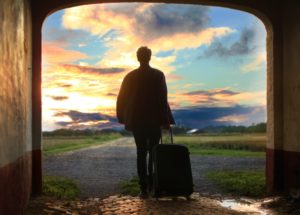Previously on the Cooper Cottages Blog, I talked about my ‘Top 3 Tips for Holiday Photography’. I covered simple tricks such as Lighting, the Rule of Two Thirds and Post Processing that anyone could use to fully capture the beauty of their next holiday – using just their smartphone.
However, This week, I thought I would introduce an alternative way to challenge your creativity.
Arguably, one of the most important aspects of travel is the memories you create with yourself and your loved ones. Returning home with an abundance of exciting adventures that are just waiting to be shared with family and friends. However, the last thing you want is for your enthusiasm to underwhelm. So, the question is, how do we express ourselves?
Though they will undoubtedly be impressed with your newly found photography abilities, there is another way of leaving your audience in awe. That is through the art of storytelling, specifically within a Travel Video.
Here are my Top 3 Tips on Creating your First Travel Video!
EQUIPMENT

Eugene Chystiakov
Before I get started on my first tip, it is important to understand your equipment long before you hit record.
Staying in tune with the theme of my last blog, using only your smartphone to capture stunning stills, or impressive actions shots does not need to be a disadvantage. However, when setting out to create a travel video, there are a few pieces of gear that I would recommend. The first being a monopod. Unlike a tripod, a monopod has a singular leg, is more compact and portable. Utilizing a monopod can add a huge amount of production value to your travel videos as they will stabilize your footage, removing any risk of shaky cam shots. Another accessory you could look into could be an external mic. If you are looking to capture a lot of audio as well as footage then investing in a mic for your phone will ensure your audio quality more than matches the value of your footage. Lastly, looking into a lens for your smartphone’s camera can be a simple way to bypass a phones hardware limitations. While a lens will not necessarily improve your image quality, it will allow you to capture far more interesting shots from various distances and angles.

Mantas Hesthaven
TIP 1: TELL A STORY
A video has to not only attract the viewer from the outset but also engage their interest right through until the end. The best way to achieve this is to tell a story, and as with any story, you will need a beginning, middle and end.
The beginning of your film could feature footage of packing your suitcase, arriving at an airport or settling into your holiday cottage. While the middle of your story will include the footage you chose to shoot during your stay. As for the ending, you could round it off mirroring your beginning or if you wanted to create a series of travel videos, why not leave your ending open? One important thing to remember is to always change up the way you film. Whether it be the angle, utilizing slow motion or panning. Doing this will ensure your film stays exciting from start to finish.
Pre-planning your shots will always be the most effective way to ensure you have a clear structure to you film, though understandably, not everyone has the time to accomplish this. Therefore, the best alternative is to film as much as you can, and always be ready to shoot. It is important to note that dedicating a portion of your day to shooting, while keeping the rest open will ensure a healthy balance. I would reference my previous blog, where I discussed the ‘Golden Hour’ and the best times of the day to use your camera.
TIP 2: THE SOUND OF MUSIC
This next tip is completely optional and will require a lot more work when editing your footage but, if understood and used correctly, can allow you to control the emotion and depth felt within your film. This is the power of sound. The most prominent use of sound in your travel video will be the music you choose to accompany your footage. I would always advise you choose your music based upon the emotion you feel when viewing your footage, never try to force your footage around pre-selected music. When it comes to selecting your music, if you plan to upload your video to somewhere such as YouTube then I would look through copyright free music as to avoid any T&Cs issues. YouTube itself has a vast array of copyright free music but there are many free and paid sites that offer great tracks. In addition to music, sound effects are equally important in breathing life to your video. Sounds such as city noise, waves crashing and peaceful nature in unison with the right music will transform your footage. These sound effects can be recorded by yourself or downloaded alongside your music.
As I previously mentioned, using sound in your travel video will undoubtedly require a lot of effort and learning. However, if you can devote the time, you will be able to engage, connect and deliver the emotion and mood you desire your video to have.
TIP 3: EDITING YOUR FOOTAGE

Matthew Sichkaruk
Arguably the most time intensive process of creating a travel video is the editing. Clipping down mountains of footage into a 2-minute film can seem to take forever. That is why it is vital to use the right software. There are many free options available such as iMovie (only available for Apple users) and DaVinci Resolve 16 that are fantastic and very user friendly for beginners. Though you can always opt for a paid software such as Adobe Premier Pro or Final Cut Pro. Once you have selected your software, it is time to start piecing together your holiday. The best advice I could give when for this part of the journey is to connect each of your shots with, for example, a location, colour and/or camera movement. This will allow your videos beginning, middle and end to flow, as opposed to becoming choppy. As a final touch, many editing software’s come with LUTs (pre-set colour profiles). These can be used to colour grade your footage, potentially giving it a more cinematic feel.
Creating a travel video is no small feat, but it is my hope that my tips have given you the confidence and inspiration to hit record on your next holiday.







